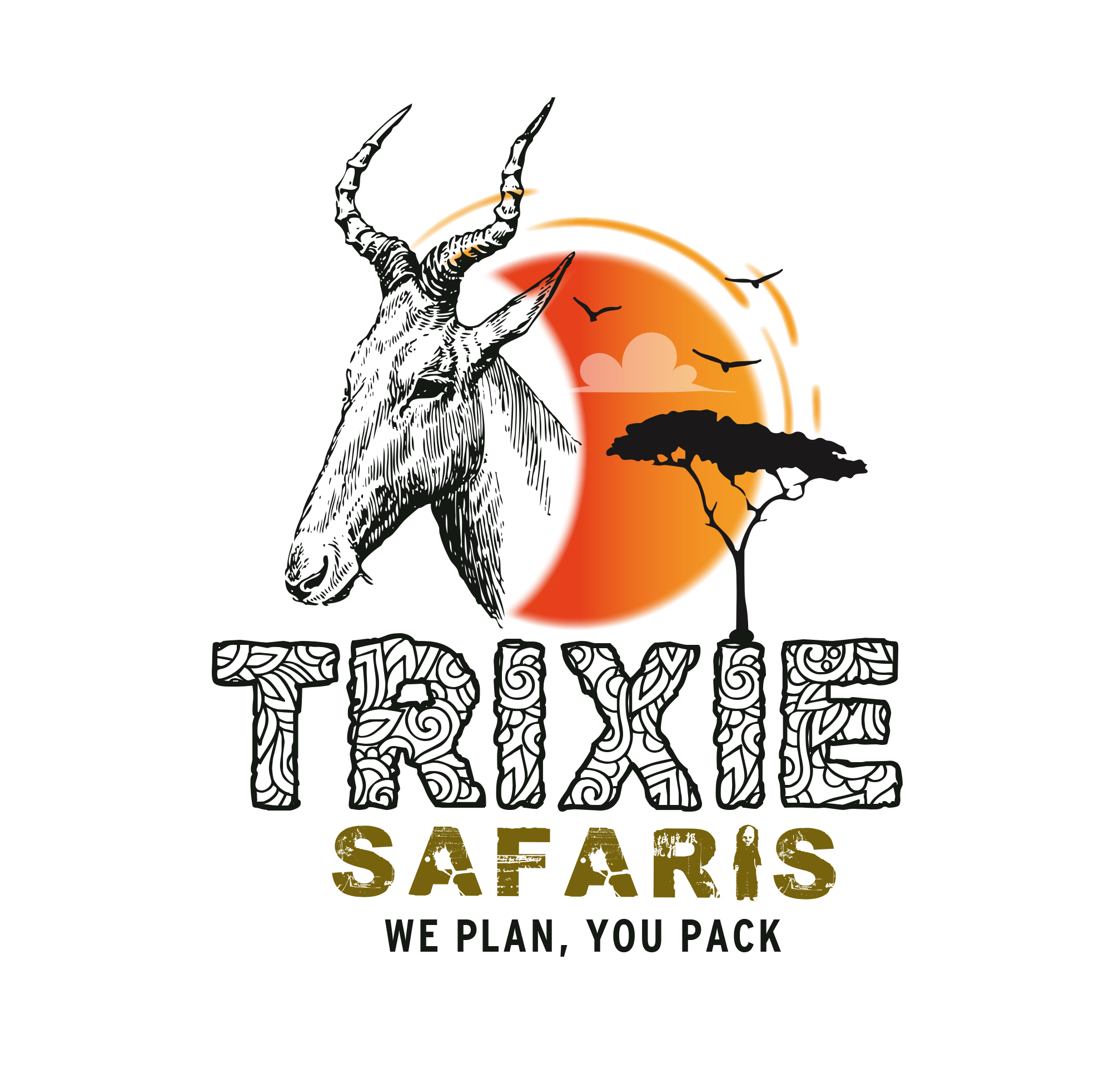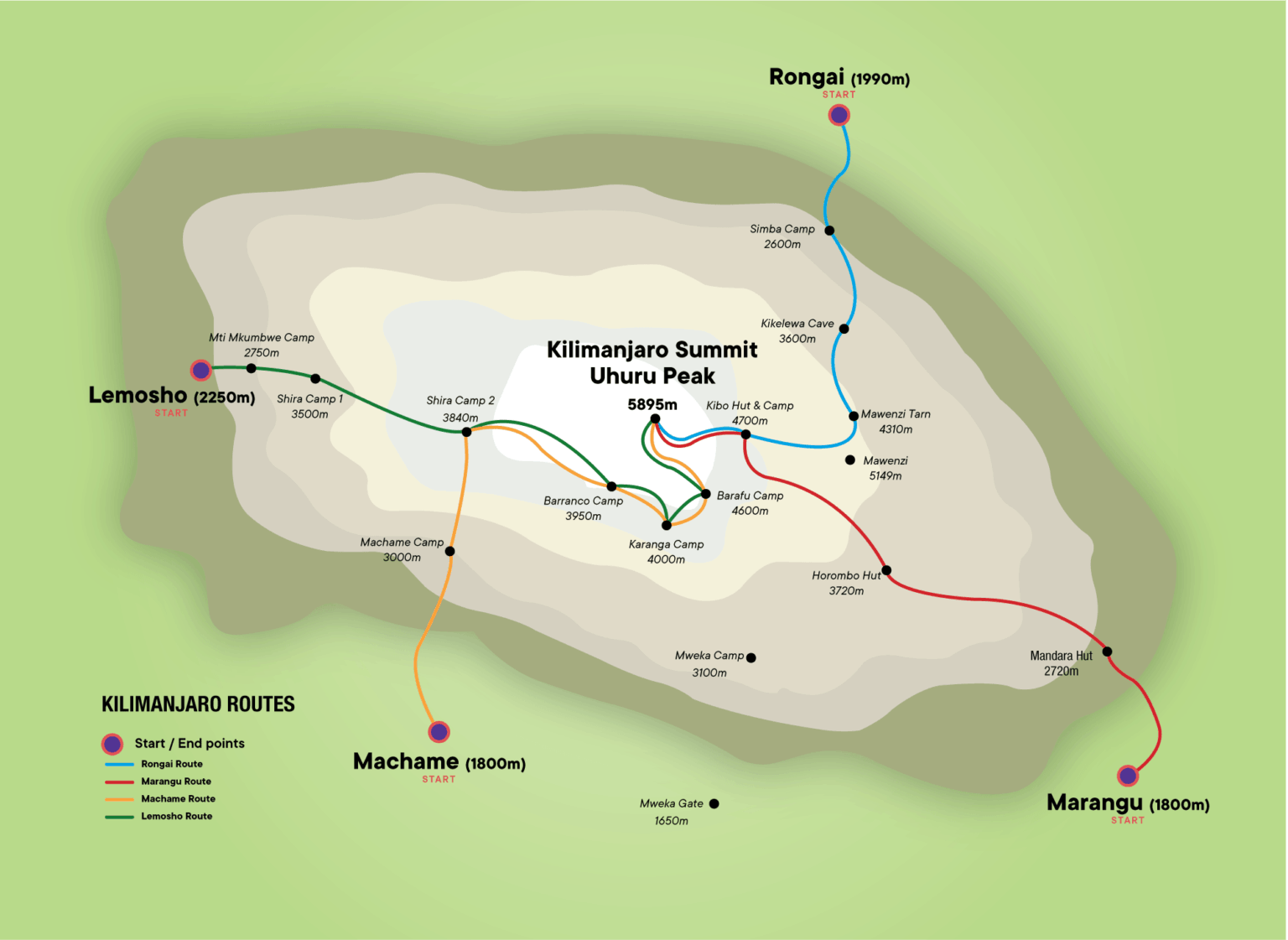6 Days Rongai Route
- Home
- Itineraries
- 6 Days Rongai Route
Introduction
The Rongai route is the only route that approaches Kilimanjaro from the north, close to the Kenyan border. Though gaining popularity amongst climbers, Rongai has low traffic. It is the preferred route for those looking for an alternative to the crowded Marangu route, for those who would like a more remote hike, and for those who are climbing during the rainy season.
The minimum number of days required for this route is six days, and seven days are recommended. Although the scenery is not as varied as the western routes, Rongai makes up for this by passing through true wilderness areas for days before joining the Marangu route at Kibo camp. This route descends down the Marangu route. Rongai is a moderately difficult route and is highly recommended, especially for those with less backpacking experience.
Day 0: Pre-trek Briefing
If you have opted for the optional airport transfers, we will pick you up from Kilimanjaro Airport or Arusha airport and transfer you to your hotel in Moshi. Pre-trek briefing at your Moshi hotel. You should be planning to arrive at least one day before the start of the trek. Today we will spend time having a pre-trek briefing. We will also review your equipment and rent any equipment which is needed.
Day 1: Hotel to Simba Camp
Drive to the attractive wooden village of Nale Moru (about 2 hours including a stop to get permits at Marangu). After signing in and preparing the porters, you will begin the hike on a wide path that winds through fields of maize and potatoes before entering pine forest. The track then starts to climb consistently but gently through attractive forest that shelters a variety of wildlife. The forest begins to thin out and the first camp is at the edge of the moorland zone with extensive views over the Kenyan plains.
Elevation: 2000m/6560ft to 2650m/8700ft
Distance: 6km/4mi
Hiking Time: 3-4 hours
Habitat: Montane Forest
Meals: Lunch and Dinner
Day 2: Simba Camp to Second Cave
The morning hike is a steady ascent up to the Second Cave with superb views of Kibo and the Eastern ice fields on the crater rim.
Elevation: 2650m/8700ft to 3450m/11,300ft
Distance: 6km/4mi
Walking Time: 3-4 hours
Habitat: Moorland
Meals: Breakfast, Lunch and Dinner
Day 3: Second Cave to Third Cave
Today we continue our hike from the Second Cave to the Third Cave.
Elevation: 3450m/11,300ft to 3880m/12,700ft
Distance: 9km/5mi
Walking Time: 2-3 hours
Habitat: Semi-desert
Meals: Breakfast, Lunch and Dinner
Day 4: Third Cave to Kibo Hut
Hike to Kibo Hut at the bottom of the Kibo crater wall. The remainder of the day is spent resting in preparation for the final ascent and a very early day!
Elevation: 3880m/12,700ft to 4750m/15,600ft
Distance: 5km/3mi
Hiking Time: 3-4 hours
Habitat: Alpine Desert
Meals: Breakfast, Lunch and Dinner
Day 5: Kibo Hut to Summit to Horombo Hut
Very early in the morning (midnight to 2am), commence the climb to the summit on steep and heavy scree or snow up to Gilman’s Point located on the crater rim (elev 5700m/18,700ft). Continuing, we now ascend to Uhuru Peak, which is the highest point in Africa. There are unbelievable views at every turn. Have your picture taken at the summit to show your friends and family. From here we descend, stopping for lunch and a rest at Kibo before continuing on to the Horombo encampment.
The beginning of this climb is done in the dark and requires headlamps or flashlights. It will be very cold until you start descending, so you will need all of your warm layers. This is by far the most difficult part of the trek with many switchbacks. Going slowly “pole pole” and an optimistic attitude will get you there!
Elevation: 4700m/15,500ft to 5895m/19,340ft
Down to 3700m/12,200ft
Distance: 6km/4mi up / 15km/9mi down
Hiking Time: 6-8 hours up / 6-8 hours down
Habitat: Alpine Desert
Meals: Breakfast, Lunch and Dinner
Day 6: Horombo Hut to trail head to Moshi hotel
After breakfast, a steady descent takes us down through moorland to the Mandara Hut. Continue descending through lush forest path to the National Park gate at Marangu. At lower elevations, it can be wet and muddy. Gaiters and trekking poles will help. Shorts and t-shirts will probably be plenty to wear (keep rain gear and warmer clothing handy).
Our vehicle will meet you at Marangu gate to drive you back to your hotel in Moshi (about 1 hour).
Elevation: 3700m/12,200ft to 1700m/5500ft
Distance: 20km/12.5mi
Hiking Time: 4-5 hours
Habitat: Forest
Meals: Breakfast
Included
- Private transport to and from Kilimanjaro International Airport to your accommodations in Moshi
- 2 nights’ accommodation in Moshi in full board (Weruweru River Lodge or Park View Hotel)
- Transportation to and from the Kilimanjaro gate
- Park entry fees
- Camping fees
- Crater fee (if applicable)
- Kilimanjaro Rescue fees
- 18% VAT on tour fees and services
- Four-season mountain tents
- Double-layered sleeping mats (4 inches / 10cm thick)
- Friendly and professional mountain guides, cook, and porters
- Three meals daily while on the mountain
- Sufficient treated and filtered drinking water throughout the trek
- Hot water for washing
- Fair wages for the mountain crew as per Kilimanjaro National Park Authority (KINAPA) and Kilimanjaro Association of Tour Operators (KIATO) standards
- Government taxes
- Portable oxygen tanks
- Ox meter
- Emergency first-aid kit
- Stethoscope
- Portable flush toilet with tent
- Mountain climbing certificates
Excluded
- Drinks at your hotel before and after the climb
- Travel insurance
- Flights
- Laundry (available at the hotel)
- Personal items and toiletries
- Tips for guides, porters, and cook
Mount Kilimanjaro is located in Tanzania, East Africa. It is the highest peak in Africa and the highest free-standing mountain in the world.
The highest peak is Uhuru Peak, standing at 5,895 meters (19,341 feet) above sea level.
The best time is during the dry season, from late June to October and January to mid-March, for stable weather conditions.
It takes 5-9 days on average, depending on the route and pace.
The altitude is 5,895 meters (19,341 feet) at its highest point.
Kilimanjaro offers several trekking routes to the summit, each with its unique challenges and scenic views. The most popular routes are:
- Marangu Route (also known as the “Coca-Cola Route”): Easiest, with hut accommodations.
- Machame Route (the “Whiskey Route”): Challenging but scenic.
- Lemosho Route: Longer, allowing for better acclimatization.
- Rongai Route: Quieter and more remote.
- Umbwe Route: The steepest and most direct, recommended for experienced trekkers.


